Category: Recommended Reading
Country Roads and City Scenes in Japanese Woodblock Prints
S. N. Johnson-Roehr at JSTOR Daily:
 A major exhibition on the art and influence of Japanese printmaker Katsushika Hokusai recently opened at the Museum of Fine Arts, Boston. Hokusai’s Great Wave is possibly the most recognized woodblock print on Earth, but as a digital collection from nearby Boston College demonstrates, many of Hokusai’s predecessors and contemporaries were skilled in the design and production of woodblock prints, or ukiyo-e, as well.
A major exhibition on the art and influence of Japanese printmaker Katsushika Hokusai recently opened at the Museum of Fine Arts, Boston. Hokusai’s Great Wave is possibly the most recognized woodblock print on Earth, but as a digital collection from nearby Boston College demonstrates, many of Hokusai’s predecessors and contemporaries were skilled in the design and production of woodblock prints, or ukiyo-e, as well.
Ukiyo-e translates literally as “picture(s) of the floating world.” Ukiyo, the “floating world,” was originally “a Buddhist concept of the transitory, insubstantial nature of human existence,” explains art historian Donald Jenkins. But by the Tokugawa (Edo) period (1615–1868), the phrase evoked “the pleasures of human life, especially those associated with the brothel districts and the amusement quarters, even while some remnants of its earlier connotations remained.”
more here.
The Profound Surfaces of Preston Sturges
Rachel Syme at The New Yorker:
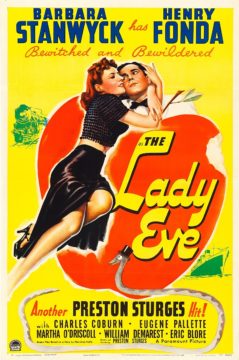 Klawans, like many before him, notes the echoes of Sturges’s life in his work: the juxtaposition of bohemians and stern squares, the fluency in both American vernacular and European argot, the linking of slapstick and hypocrisy. But he also wants to make this reading “wobble a bit,” and he peers between every snappy line for cultural references, Biblical allegories, political sympathies, and philosophies about love and suffering. A Sturges film, Klawans believes, is more than just its witty banter: “One of the chief distractions from thinking your way through the films is their most universally admired trait: the dialogue.”
Klawans, like many before him, notes the echoes of Sturges’s life in his work: the juxtaposition of bohemians and stern squares, the fluency in both American vernacular and European argot, the linking of slapstick and hypocrisy. But he also wants to make this reading “wobble a bit,” and he peers between every snappy line for cultural references, Biblical allegories, political sympathies, and philosophies about love and suffering. A Sturges film, Klawans believes, is more than just its witty banter: “One of the chief distractions from thinking your way through the films is their most universally admired trait: the dialogue.”
This is a compelling idea, but it misses what makes Sturges’s films so fascinating. His rat-a-tat scripts aren’t running cover for some hidden meaning; they are the meaning. His characters make sense because they slip the yoke of explanation.
more here.
On Will Bunch’s “After the Ivory Tower Falls”
Johann N. Neem in the Los Angeles Review of Books:
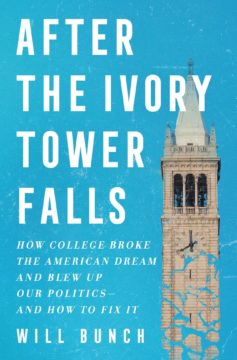 Talk-show host Rush Limbaugh, recipient of the Presidential Medal of Freedom under former president Donald Trump, relied on his listeners’ resentment of college-educated folks throughout the 1990s to stoke the fires of culture war. There was something about what colleges did that convinced many of Limbaugh’s listeners that, in journalist Will Bunch’s words, “nothing in America made sense anymore.” And it was this confusion, Bunch argues in his new book, After the Ivory Tower Falls: How College Broke the American Dream and Blew Up Our Politics—and How to Fix It, that produced the biggest divide in American politics, between those with and without college degrees. Rather than dismiss the concerns of Limbaugh’s listeners, Bunch takes them seriously. They are not wrong to sense that “the American way of college went off the rails,” Bunch concludes.
Talk-show host Rush Limbaugh, recipient of the Presidential Medal of Freedom under former president Donald Trump, relied on his listeners’ resentment of college-educated folks throughout the 1990s to stoke the fires of culture war. There was something about what colleges did that convinced many of Limbaugh’s listeners that, in journalist Will Bunch’s words, “nothing in America made sense anymore.” And it was this confusion, Bunch argues in his new book, After the Ivory Tower Falls: How College Broke the American Dream and Blew Up Our Politics—and How to Fix It, that produced the biggest divide in American politics, between those with and without college degrees. Rather than dismiss the concerns of Limbaugh’s listeners, Bunch takes them seriously. They are not wrong to sense that “the American way of college went off the rails,” Bunch concludes.
More here.
A Potential Triumph in Physics, Dogged by Accusation and Doubt
Kit Chapman in Undark:
 Within the past decade, scientists have discovered a class of materials that, at extreme pressures, show superconductivity at temperatures just a few tens of degrees below freezing, but the goal of a room-temperature superconductor has remained out of reach. In a paper published in the journal Nature on March 8, Dias and his colleagues reported they’d found a material, known as a lutetium hydride, that under high pressures can be superconducting at temperatures as high as 21 degrees Celsius, or nearly 70 degrees Fahrenheit — a discovery that many physicists describe as worthy of a Nobel Prize, if true.
Within the past decade, scientists have discovered a class of materials that, at extreme pressures, show superconductivity at temperatures just a few tens of degrees below freezing, but the goal of a room-temperature superconductor has remained out of reach. In a paper published in the journal Nature on March 8, Dias and his colleagues reported they’d found a material, known as a lutetium hydride, that under high pressures can be superconducting at temperatures as high as 21 degrees Celsius, or nearly 70 degrees Fahrenheit — a discovery that many physicists describe as worthy of a Nobel Prize, if true.
But the physics community has been here with Dias before. In 2020, a similarly bold claim from Dias — of a material that became superconducting at around 15 degrees Celsius (59 Fahrenheit) — unleashed a torrent of critiques and accusations, ultimately leading to the paper’s retraction last fall. Dias’ fiercest critics say that he has committed research misconduct, possibly on more than one occasion, and that he has yet to be held fully accountable.
More here.
David Hume’s Guide to Today’s Politics
Alan Jacobs in The Hedgehog Review:
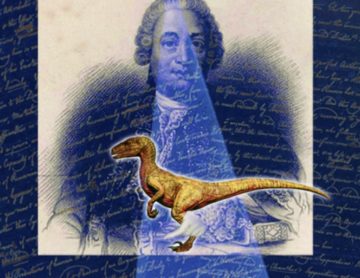 Recently, I argued in this publication that one of our best guides to the world of social media is David Hume—but Hume helps us to understand other elements of our current political culture as well.
Recently, I argued in this publication that one of our best guides to the world of social media is David Hume—but Hume helps us to understand other elements of our current political culture as well.
Take, for instance, Hume’s contention, in a famous essay, that the two primary “corruptions of true religion” are superstition and enthusiasm. He was thinking primarily of Roman Catholics on the one hand and, on the other, a variety of Protestant religious groups that today we might see as examples or forerunners of evangelicalism; but he deliberately frames his argument in more general terms, as though describing not distinct factions of his time but rather enduring dispositions. “The true sources of superstition,” he argues, are “weakness, fear, melancholy, together with ignorance.” The true sources of enthusiasm, by contrast, are “hope, pride, presumption, a warm imagination, together with ignorance.” You will note that the only item common to both sides is ignorance. A typical Hume comment.
I want to argue that the primary social forces disrupting American society today are modern versions of these two false religions. Our current version of superstition is the MAGA belief system. Our current version of enthusiasm is what some people call wokeness but I prefer to call Left Purity Culture (LPC).
More here.
Yanis Varoufakis on why we should ‘let the banks burn’
Wednesday Poem
And, “so it goes.”
. . . . —Kurt Vonnegut
Babel
Oh, God did cunningly, there at Babel –
Not mere togues dividing, but soul from soul,
So that never again should men be able
To fashion one infinite, towering whole.
by Lola Ridge
The big idea: will fusion power save us from the climate crisis?
Philip Ball in The Guardian:
 There are plenty of uncertainties and unknowns around fusion energy, but on this question we can be clear. Since what we do about carbon emissions in the next two or three decades is likely to determine whether the planet gets just uncomfortably or catastrophically warmer by the end of the century, then the answer is no: fusion won’t come to our rescue. But if we can somehow scramble through the coming decades with makeshift ways of keeping a lid on global heating, there’s good reason to think that in the second half of the century fusion power plants will gradually help rebalance the energy economy.
There are plenty of uncertainties and unknowns around fusion energy, but on this question we can be clear. Since what we do about carbon emissions in the next two or three decades is likely to determine whether the planet gets just uncomfortably or catastrophically warmer by the end of the century, then the answer is no: fusion won’t come to our rescue. But if we can somehow scramble through the coming decades with makeshift ways of keeping a lid on global heating, there’s good reason to think that in the second half of the century fusion power plants will gradually help rebalance the energy economy.
Perhaps it’s this wish for a quick fix that drives some of the hype with which advances in fusion science and technology are plagued. Take the announcement last December of a “major breakthrough” by the National Ignition Facility (NIF) of the Lawrence Livermore National Laboratory in California. The NIF team reported that, in their efforts to develop a somewhat unorthodox form of fusion called inertial confinement fusion (ICF), they had produced more energy in their reaction chamber than they had put in to get the fusion process under way.
More here.
How a DNA ‘Parasite’ May Have Fragmented Our Genes
Jake Buehler in Quanta Magazine:
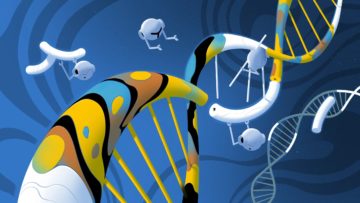 All animals, plants, fungi and protists — which collectively make up the domain of life called eukaryotes — have genomes with a peculiar feature that has puzzled researchers for almost half a century: Their genes are fragmented.
All animals, plants, fungi and protists — which collectively make up the domain of life called eukaryotes — have genomes with a peculiar feature that has puzzled researchers for almost half a century: Their genes are fragmented.
In their DNA, the information about how to make proteins isn’t laid out in long coherent strings of bases. Instead, genes are split into segments, with intervening sequences, or “introns,” spacing out the exons that encode bits of the protein. When eukaryotes express their genes, their cells have to splice out RNA from the introns and stitch together RNA from the exons to reconstruct the recipes for their proteins.
The mystery of why eukaryotes rely on this baroque system deepened with the discovery that the different branches of the eukaryotic family tree varied widely in the abundance of their introns. The genes of yeast, for instance, have very few introns, but those of land plants have many. Introns make up almost 25% of human DNA. How this tremendous, enigmatic variation in intron frequency evolved has stirred debate among scientists for decades.
More here.
Tuesday, April 4, 2023
Richard Rorty & Dan Dennett on Science (2000)
Postcards from Absurdistan: Prague at the End of History
Alena Dvořáková at the Dublin Review of Books:
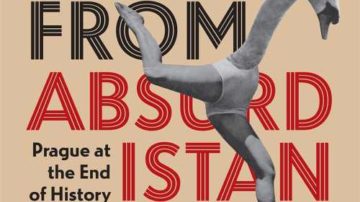 Postcards from Absurdistan is the third volume in a ‘loose trilogy of cultural histories’ in which Derek Sayer has argued that European modernity is best examined from a vantage point located, both literally and figuratively, in Bohemia and its capital, Prague. The first volume, The Coasts of Bohemia (1998), tackled the issue of national identity. It presented Czech history – from its mythic beginnings to just after the communist takeover in 1948 – as a lesson on the nature of national historiography. When a ‘small’ nation has, for most of its past, struggled for recognition, its history is bound to consist of attempts to re-invent the past in order to assure itself of a future. The form of this reassurance: a bricolage of national treasures assembled largely under the motto ‘small but ours’. Focusing on the main tropes of the Czech National Revival – especially the emphasis on the Czech language as the basis for national identity, and the encoding of Czechness as something anti-German, anti-aristocratic and anti-Catholic – Sayer presents this chequered history as a corrective to the national histories of bigger, older, more secure nations. A lot of what he marks out as specifically Czech, however, sounds very familiar in the Irish context. None better than the Czechs at understanding Irish people’s fondness for the ‘best little country in the world’ trope (including its associated ironies) and the pitfalls of turning a language into a crux of nationality.
Postcards from Absurdistan is the third volume in a ‘loose trilogy of cultural histories’ in which Derek Sayer has argued that European modernity is best examined from a vantage point located, both literally and figuratively, in Bohemia and its capital, Prague. The first volume, The Coasts of Bohemia (1998), tackled the issue of national identity. It presented Czech history – from its mythic beginnings to just after the communist takeover in 1948 – as a lesson on the nature of national historiography. When a ‘small’ nation has, for most of its past, struggled for recognition, its history is bound to consist of attempts to re-invent the past in order to assure itself of a future. The form of this reassurance: a bricolage of national treasures assembled largely under the motto ‘small but ours’. Focusing on the main tropes of the Czech National Revival – especially the emphasis on the Czech language as the basis for national identity, and the encoding of Czechness as something anti-German, anti-aristocratic and anti-Catholic – Sayer presents this chequered history as a corrective to the national histories of bigger, older, more secure nations. A lot of what he marks out as specifically Czech, however, sounds very familiar in the Irish context. None better than the Czechs at understanding Irish people’s fondness for the ‘best little country in the world’ trope (including its associated ironies) and the pitfalls of turning a language into a crux of nationality.
more here.
On Mary Wollstonecraft
Joanna Biggs at The Paris Review:
 A Vindication was written in six weeks. On January 3, 1792, the day she gave the last sheet to the printer, Wollstonecraft wrote to Roscoe: “I am dissatisfied with myself for not having done justice to the subject.—Do not suspect me of false modesty—I mean to say that had I allowed myself more time I could have written a better book, in every sense of the word.” Wollstonecraft isn’t in fact being coy: her book isn’t well-made. Her main arguments about education are at the back, the middle is a sarcastic roasting of male conduct-book writers in the style of her attack on Burke, and the parts about marriage and friendship are scattered throughout when they would have more impact in one place. There is a moralizing, bossy tone, noticeably when Wollstonecraft writes about the sorts of women she doesn’t like (flirts and rich women: take a deep breath). It ends with a plea to men, in a faux-religious style that doesn’t play to her strengths as a writer. In this, her book is like many landmark feminist books—The Second Sex, The Feminine Mystique—that are part essay, part argument, part memoir, held together by some force, it seems, that is attributable solely to its writer. It’s as if these books, to be written at all, have to be brought into being by autodidacts who don’t know for sure what they’re doing—just that they have to do it.
A Vindication was written in six weeks. On January 3, 1792, the day she gave the last sheet to the printer, Wollstonecraft wrote to Roscoe: “I am dissatisfied with myself for not having done justice to the subject.—Do not suspect me of false modesty—I mean to say that had I allowed myself more time I could have written a better book, in every sense of the word.” Wollstonecraft isn’t in fact being coy: her book isn’t well-made. Her main arguments about education are at the back, the middle is a sarcastic roasting of male conduct-book writers in the style of her attack on Burke, and the parts about marriage and friendship are scattered throughout when they would have more impact in one place. There is a moralizing, bossy tone, noticeably when Wollstonecraft writes about the sorts of women she doesn’t like (flirts and rich women: take a deep breath). It ends with a plea to men, in a faux-religious style that doesn’t play to her strengths as a writer. In this, her book is like many landmark feminist books—The Second Sex, The Feminine Mystique—that are part essay, part argument, part memoir, held together by some force, it seems, that is attributable solely to its writer. It’s as if these books, to be written at all, have to be brought into being by autodidacts who don’t know for sure what they’re doing—just that they have to do it.
more here.
The Beatles and the Glory of Creative Risk
Vincent Ercolano in The Hedgehog Review:
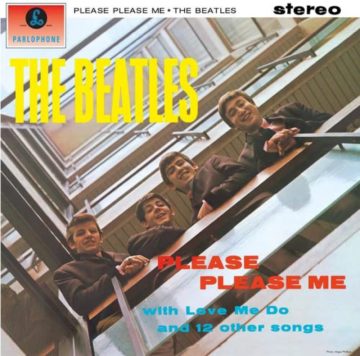 Perhaps it took the roiling events that would give such a manic-depressive quality to 1963––the death in early June of Pope John XXIII (and with it, some feared, the demise of John’s policy of aggiornamento, “updating”); the signing of the Nuclear Test Ban Treaty in August; the March on Washington the same month; and, in cruel culmination of the year’s roller-coaster ride, the assassination of President Kennedy on November 22––to open the ears (and hearts) of the American public, by year’s end emotionally spent, to the cheeky wit and fresh take on rock ‘n’ roll offered by the Beatles. As Rorem would observe, “Our need for [the Beatles] is…specifically a renewal, a renewal of pleasure.”
Perhaps it took the roiling events that would give such a manic-depressive quality to 1963––the death in early June of Pope John XXIII (and with it, some feared, the demise of John’s policy of aggiornamento, “updating”); the signing of the Nuclear Test Ban Treaty in August; the March on Washington the same month; and, in cruel culmination of the year’s roller-coaster ride, the assassination of President Kennedy on November 22––to open the ears (and hearts) of the American public, by year’s end emotionally spent, to the cheeky wit and fresh take on rock ‘n’ roll offered by the Beatles. As Rorem would observe, “Our need for [the Beatles] is…specifically a renewal, a renewal of pleasure.”
While Beatles fans continually renew the pleasure of listening to Please Please Me, whether on smartphones, CDs, or once-again-popular vinyl, perhaps the premier accomplishment of Lennon, McCartney, Harrison, and Starr was the rocket-like trajectory described by their music in the four years from that first album to the arrival in 1967 of the emotionally complex and musically audacious Sgt. Pepper’s Lonely Hearts Club Band…
More here.
Cracking the creation of life: An exclusive interview with biochemist Nick Lane
Omari Edwards at IAI News:
 Thanks so much for speaking to us Nick, I wanted to start off by asking about the philosophical principles you use in the lab every day. Philosophers often see science as proposing a reductive theory of the world, breaking it down into its constituent parts. Some worry that this ignores the complexity of life. Do you think that this reduction plays a role in your work and science more broadly?
Thanks so much for speaking to us Nick, I wanted to start off by asking about the philosophical principles you use in the lab every day. Philosophers often see science as proposing a reductive theory of the world, breaking it down into its constituent parts. Some worry that this ignores the complexity of life. Do you think that this reduction plays a role in your work and science more broadly?
I have to say that reductionism plays a rather ambiguous role in my work, and I think in the work of most scientists. Of course, there are some necessities about the scientific method which mean that the only way we can answer certain questions is by reducing a problem to its fundamentals. However, I think this misses out on what scientists are really doing. We aren’t trying to just give a reductive account we are always working within a framework. And that framework is going to be synthetic.
More here.
Towards a better understanding of status and victimhood
Susan Neiman in Persuasion:
 While battles about what’s called the “woke left” now dominate political discussion in many countries, it’s time to ask whether woke really belongs on the left—or if woke represents a distortion of the core principles of the left, a drift into a philosophy of tribalism.
While battles about what’s called the “woke left” now dominate political discussion in many countries, it’s time to ask whether woke really belongs on the left—or if woke represents a distortion of the core principles of the left, a drift into a philosophy of tribalism.
Not so long ago, universalism defined the left; international solidarity was its watchword. This was, above all, what distinguished it from the right, which recognized no deep connections, and few real obligations, to anyone outside its own circle. The left demanded that the circle encompass the globe. That was what standing left truly meant: to care about striking coal miners in Wales, or the Republican cause in Spain, or freedom fighters in South Africa, whether you came from their tribes or not. What united the left was not blood but conviction—first and foremost the conviction that behind all the differences of time and space that separate us, human beings are deeply connected in a wealth of ways. To say that histories and geographies affect us is trivial. To say that they determine us is false.
The opposite of universalism is often called “identitarianism,” but the word is itself misleading, because identity is a fluid concept whose meaning and importance vary in space and in time.
More here.
The Epistemology of Deep Learning – Yann LeCun
Mars rocks await a ride to Earth — can NASA deliver?
Alexandra Witze in Nature:
 For decades, scientists who study Mars have watched in envy as spacecraft brought pieces of the Moon, chunks of asteroids and even samples of the solar wind to Earth to be studied. Now some of those researchers might finally be on track to receive rocks from the red planet — but only if NASA and the European Space Agency (ESA) can pull off a complex and daring mission.
For decades, scientists who study Mars have watched in envy as spacecraft brought pieces of the Moon, chunks of asteroids and even samples of the solar wind to Earth to be studied. Now some of those researchers might finally be on track to receive rocks from the red planet — but only if NASA and the European Space Agency (ESA) can pull off a complex and daring mission.
For several years, the two agencies have been planning to send spacecraft to Mars, starting no earlier than 2027, to pick up rock samples that are being collected by NASA’s Perseverance rover. But technological and financial hurdles could derail the multi-billion-dollar scheme. Last month, NASA said it wants to allocate nearly US$1 billion to Mars sample return in the upcoming fiscal year — a huge sum that could force the agency to dip into other parts of its science budget. This would affect other projects, potentially delaying a planned heliophysics mission, for example. And much is at stake for the Mars sample return: Perseverance has gathered a scientifically stunning set of rocks. In December and January, the rover deposited ten cigar-sized tubes filled with rock, soil and air from the Martian atmosphere on a flat area of the planet’s surface for a future mission to pick up (see ‘Sample depot’).
More here.
Tuesday Poem
The Longest Way ‘Round
Mommy taught
3rd grade
Her book was The Longest
Way ’Round (Is The Shortest Way Home)
I was an adult
Before I realized
How True
Their marriage
Is none of your business
You don’t understand
Your parents don’t owe
You anything
You finally say to yourself:
They Have Nothing
I want
Except
I remember this Blue Book
With a wonderful title
My Mother West Wind Stories
And Mommy singing
“Time After Time”
It worked
I am Happy
by Nikki Giovanni
from The Poetry Foundation
Sunday, April 2, 2023
A Novel The Cia Spent A Fortune To Suppress
Joel Whitney at Public Books:
 “Our Latin American literature has always been a committed, a responsible literature,” explained Guatemalan novelist Miguel Ángel Asturias in 1973.
“Our Latin American literature has always been a committed, a responsible literature,” explained Guatemalan novelist Miguel Ángel Asturias in 1973.
The great works of our countries have been written in response to a vital need, a need of the people, and therefore almost all our literature is committed. Only as an exception do some of our writers isolate themselves and become uninterested in what is happening around them; such writers are concerned with psychological or egocentric subjects and the problems of a personality out of contact with surrounding reality.
It is the bourgeois writers, he wants to say here, who ignore the looting of their resources by the rich behemoth to the north, which then turns around and redeploys those riches on death squads and dictators. It is no surprise, then, that Asturias’s landmark novel, Mr. President, confronts its readers with similar frankness. Mr. President examines widespread corruption around a fictional Guatemalan dictator. But its 1946 debut reflected a delay of more than a decade by the country’s real dictators, who disrupted the novel’s genesis and sent its author into exile. And in this act of suppression, Asturias’s censors and exilers were aided by the US, specifically the CIA.
Such suppression has long impaired Asturias’s career, reputation, and recognition. Indeed, in a new introduction to Mr. President—out last summer in David Unger’s lucid new translation—literary scholar Gerald Martin calls the novel “the first page of the Boom.” “The Boom” was the nickname for a clutch of new Latin American novels emerging in the 1960s, including those by future Nobel laureates Gabriel García Márquez and Mario Vargas Llosa.
More here.
